While in Stockholm i finally got a chance to visit Färgfabriken, an ex-colour factory turned contemporary art and architecture space with a relentlessly good programme.
There are only very few and inconspicuous guiding signs to help you find your way from the metro station to Färgfabriken, i’m still amazed i managed to find the place. The area around is pretty nice though…
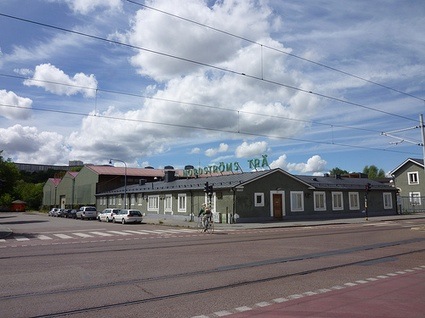
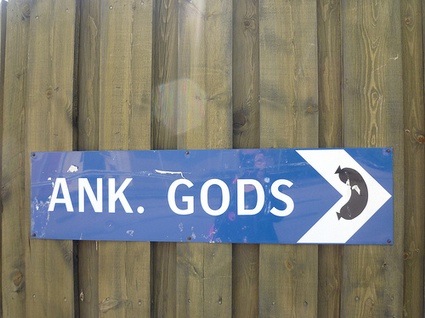
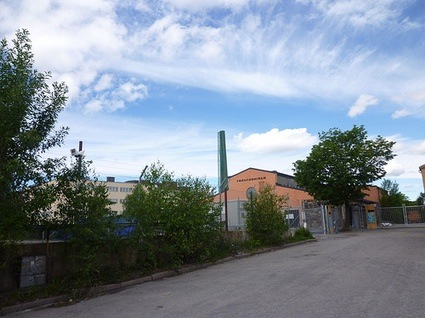
The exhibition on view was Building Blocks. Happy coincidence since the day before i had met Martin Frostner who, along with the other members of Medium, had curated the exhibition.
Building Blocks is the outcome of a series of meetings between 9 architecture studios and their clients. The clients were young. As young as 6 year old in some cases. During the brainstormings, children were allowed to let their imagination run free while the architects were left with the task of interpreting their wishes and visions. The resulting buildings have strikingly different size and style.
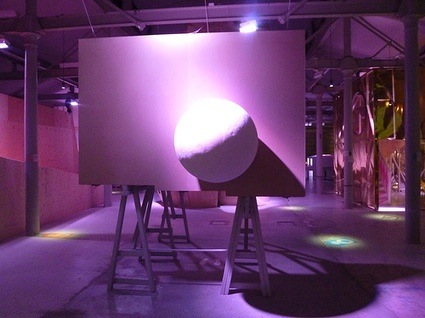 Wilhelmson architects
Wilhelmson architects
Building Blocks investigates the accepted roles in the building process, specifically the relationship between architect and client. It also aims to show how a child’s vision of an ideal home may differ from the adult norm. A child’s limited architectural reference and ultimate freedom of choice may reveal new solutions for living. It may also challenge adults to think about their chosen environments in a new way by looking beyond the accepted notions of taste, fashion and tradition.
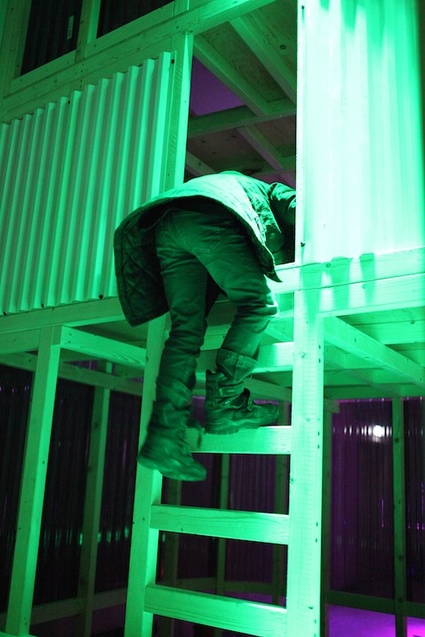 Kjellander + Sjöbergs. Photo by Xenia Nikolskaya
Kjellander + Sjöbergs. Photo by Xenia Nikolskaya
Although the original concept might seem a bit cliché (children, unlike grown-ups, don’t let their creativity be cornered by rules and formalities, blablabla), the exercise brought about some inspiring constructions. Although some of them were downright conventional, others had that ‘architecture installation’ cachet one can sometimes find at the Venice Biennale of Architecture.
Building Blocks is a fresh way to open discussions about the accepted norms for all buildings. Is dull architecture a product of a client’s lack of imagination, the architect’s failure to inspire or the restraints of the planning process?
The structures were distributed over Färgfabriken’s first floor as if the gallery were a small town. The show is obviously very children-friendly but it not meant to be enjoyed by kids only, even if adults might not always find it possible to wriggle inside some of the constructions.
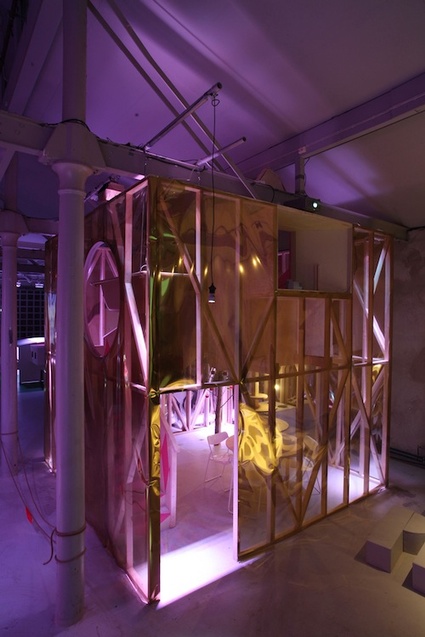 The AOC. Photo by Xenia Nikolskaya
The AOC. Photo by Xenia Nikolskaya
One of the most cheerful and seducing houses is the one built by architecture studio AOC following the instructions a group of 7 children from Friars Primary School in London. The collective image of the dream house that emerged from the brainstorming features a big kitchen for baking cookies and muffins, a bathtub suspended high in the ceiling, golden colour everywhere, vibrant colours elsewhere, a roof no higher than treetops so that you can pick up apples from the windows. The windows also had to blow bubbles, by the way. The house is covered with a light reflecting golden film which transparency depends on where the light comes from.

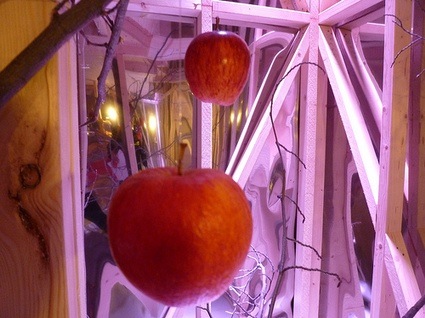
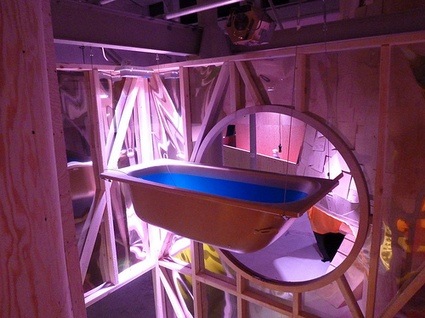 Kjellander + Sjöberg designed a small, elegant house for two teenagers who live in a suburb of Stockholm with their parents. The building they designed would contain everything that their family flat can’t. It’s essentially a space where they can listen to loud music, play basketball, party with friends and play computer games.
Kjellander + Sjöberg designed a small, elegant house for two teenagers who live in a suburb of Stockholm with their parents. The building they designed would contain everything that their family flat can’t. It’s essentially a space where they can listen to loud music, play basketball, party with friends and play computer games.
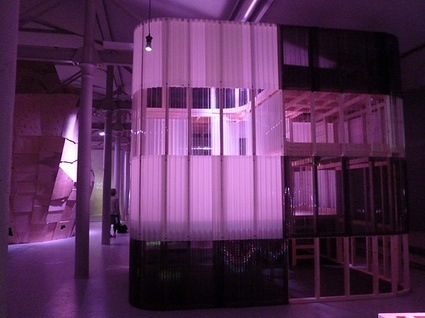 Kjellander + Sjöberg
Kjellander + Sjöberg
The house built by Australian architecture studio Terroir embodies the dream of a 6 year old girl. She wanted a space that would look like a secret place from a fairytale with princesses, elves and castles.
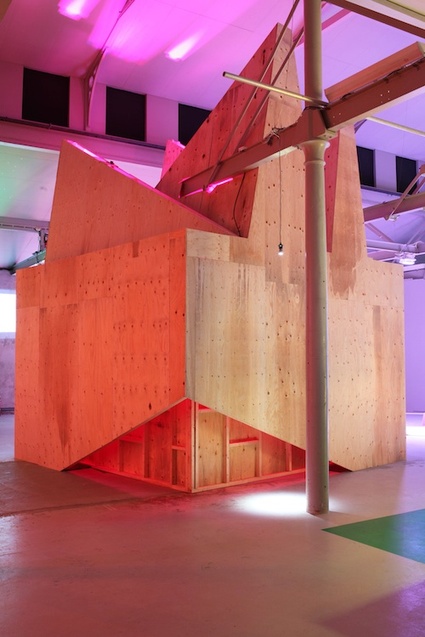 Terroir. Photo by Xenia Nikolskaya
Terroir. Photo by Xenia Nikolskaya
She would live in the attic, host a friend in the basement, and they would meet via of a slide between one bathroom and the next, with each slide ending in a trampoline.
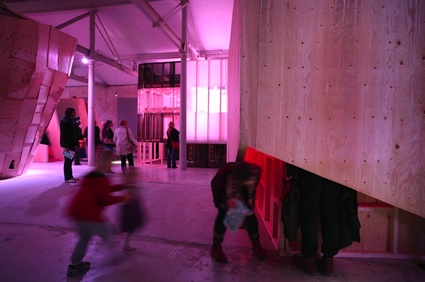 Terroir house. Photo by Xenia Nikolskaya
Terroir house. Photo by Xenia Nikolskaya
The dwelling commissioned to Hollmén Reuter Sandman by two 6 year old children is mostly a big playground with also a tunnel too narrow for adults to crawl inside, nooks, balconies and peepholes to spy on passersby.
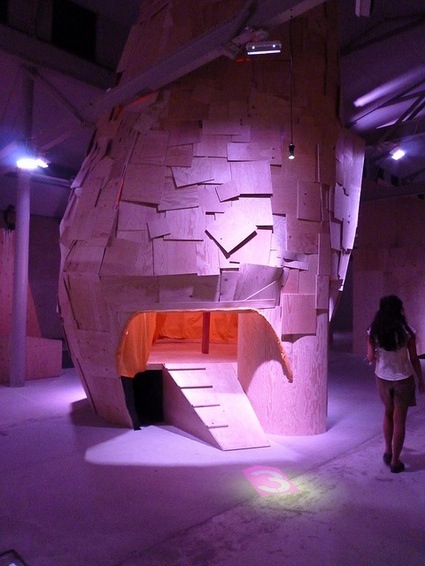 Hollmén Reuter Sandman
Hollmén Reuter Sandman
Kod architects worked with two 7 year old kid to create a house with a roof access but also a dancefloor, lounge area, football field, bowling saloon and a secret control room to spy on people inside and outside the building.
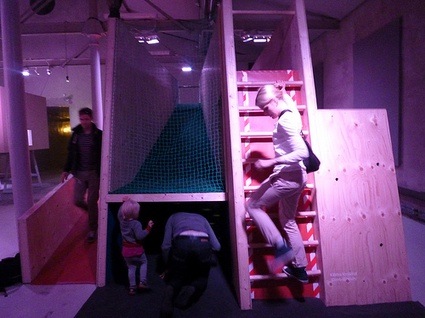 Kod architects
Kod architects
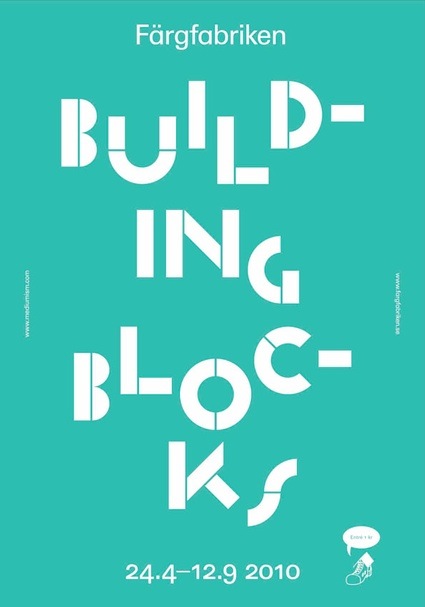
Building Blocks was curated by Medium, a creative studio based in Stockholm producing projects related to public space, architecture and visual culture.
All my images on flickr.
Building Blocks remains open at Färgfabriken until September 12, 2010 at , Stockholm.
